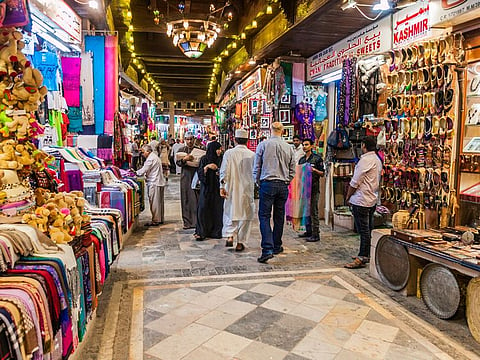A new vision can help Oman with its accumulated problems
Oman’s revised strategy must directly aim at dropping joblessness among nationals

Also In This Package
COVID-19 has not left any economy anywhere intact from millions of people made redundant and others losing their business. Take the US, for example - the pandemic increased the unemployment rate tenfold, rising to 14.7 per cent at the end of last year, after 20.5 million lost their jobs.
It was the worst since the Great Depression in the 1930s. The situation is not much different in other countries. However, the only difference lies in the ability of each economy to withstand the consequences and the ability to provide aid to the affected and unemployed.
The GCC countries, including Oman, provided subsidies that contributed to limiting the deterioration. Collectively, they have provided nearly $500 billion in support for various sectors.
Oil shock
Nevertheless, the unemployment rate increased in most of the GCC states for two main reasons - the pandemic, of course, and the subsequent collapse of oil prices, which created new complications for those countries. Such developments coincided with Sultan Haitham bin Tariq coming to power in Oman, vowing to reduce the COVID-19 created repercussions on the economy, despite the adverse circumstances that temporarily impeded some of his plans. In this aspect, we can refer to an important issue.
The pandemic has mainly affected jobs in certain labour intensive sectors, such as tourism, services, aviation and hospitality. These sectors are key to the Oman economy. The private sector and public companies laid off large numbers, and hundreds of small and medium-sized companies went bankrupt.
Fortunately, the COVID-19 repercussions are temporary and business will return to the previous state. Oil prices are stable at around $70 a barrel, which bodes well for improving economic conditions and creating more jobs.
Perennial problem
This does not mean turning a blind eye to unemployment in the GCC countries. It is one of the issues that must get proper attention to help improve living standards. They have taken important practical steps to alleviate its severity. Oman, for instance, has taken many measures, including not issuing visas for some sectors. Unemployment among Saudis decreased in the fourth quarter of last year to 12.6 per cent compared to 14.9 per cent for the third quarter.
Although the unemployment rate in Oman is higher than other Gulf countries, there are indications about solving this dilemma. The new leader has a vision and his initial steps can bring about a qualitative leap in the economy and society. However, this needs time. It is because the country has been in a state of void on decision-making during the time of the late Sultan Qaboos’ illness. The private sector must be involved in providing jobs.
At a time when Omanis constitute 85 per cent of workers in the government sector, the Omani share does not exceed 13 per cent of the two million workers in the private sector. There are large projects on the way to implementation, such as the Green Hydrogen Production, the largest factory of its kind in the world and costing $30 billion. The project is expected to turn Oman into a leading producer of renewable energy.
Solutions are available and Sultan Haitham has a sincere vision to address accumulated problems. There is also solidarity and Gulf support, which entails cooperation to all Omani parties to overcome the crisis away…
- Mohammed Al Asoomi is a specialist in energy and Gulf economic affairs.
Sign up for the Daily Briefing
Get the latest news and updates straight to your inbox









